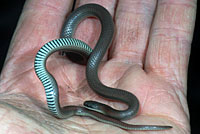Identifying Sharp-tailed Snakes (Contia)

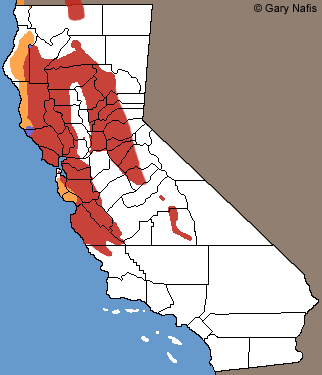
Red - Sharp-tailed Snake
Orange - Forest Sharp-tailed Snake
Click the map for more information

Not Dangerous Sharp-tailed Snakes do not have venom that is dangerous to most humans. |
||
Two species of Sharp-tailed snakes are found in California: The easiest way to differentiate the two species in the field is to look at the caudal scales and the tail length. (Caudal scales are the scales on the tail behind the cloaca.) This means the snake must be picked up and turned over so you can count scales - not an easy thing to do with a tiny, squirming snake. |
||
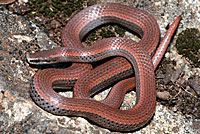 |
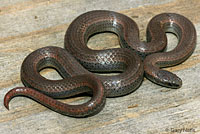 |
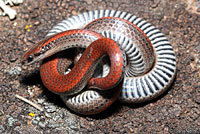 |
| Contia tenuis - Common Sharp-tailed Snake | ||
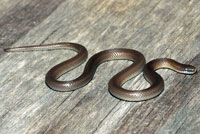 |
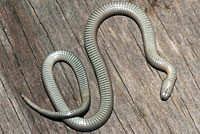 |
|
| Contia longicaudae - Forest Sharp-tailed Snake |
||
| Comparisons of the Two Species of Sharp-tailed Snakes (Contia) | ||
Adult C. longicauda from Santa Cruz County, and Adult C. tenuis from Santa Clara County. (The C. longicauda shown is in shed, so its color is duller than normal.) |
||
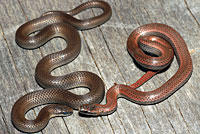 |
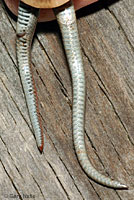 |
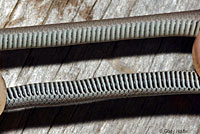 |
| C. longicauda on left, C. tenuis on right. |
C. tenuis on the left, C. longicauda on the right. |
C. longicaude on top, C. tenuis on bottom. |
| Identifying Sharp-tailed Snake (Contia) species | ||
Contia longicauda went unnoticed for a long time because of its similarities to Contia tenuis and because of its small size, fossorial and secretive nature, and seasonally-limited period of activity. The easiest way to differentiate the two species in the field is to look at the caudal scales and the tail length. (Caudal scales are the scales on the tail behind the cloaca.) C. longicaudae has a longer tail with more caudal scales than C. tenuis. C. longicauda has from 43 to 58 caudal scales, while C. tenuis has from 24 - 43. The tail of C. longicauda averages 20 percent of the total length of the snake. The tail of C. tenuis averages 14.5 percent of the total length. |
||
Return to the Top
© 2000 -

